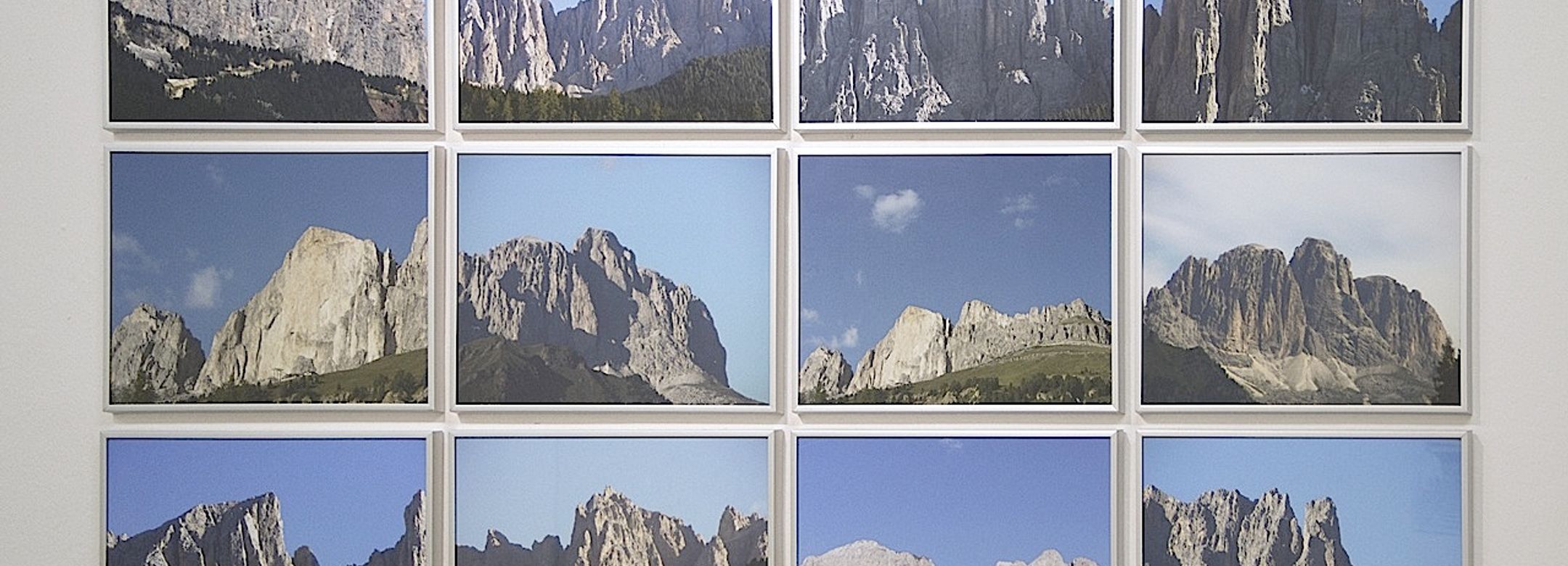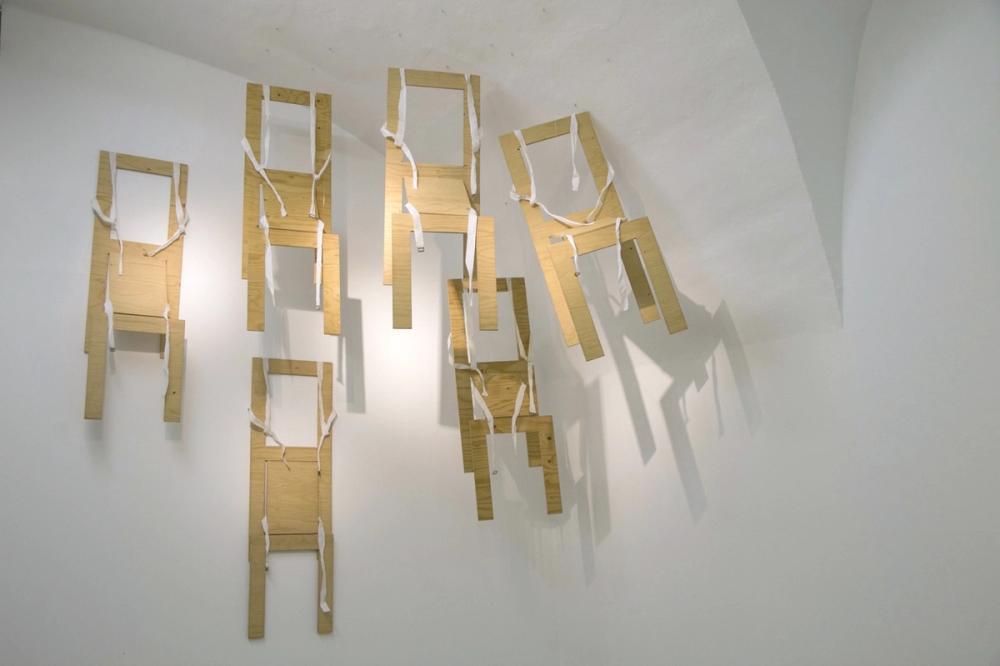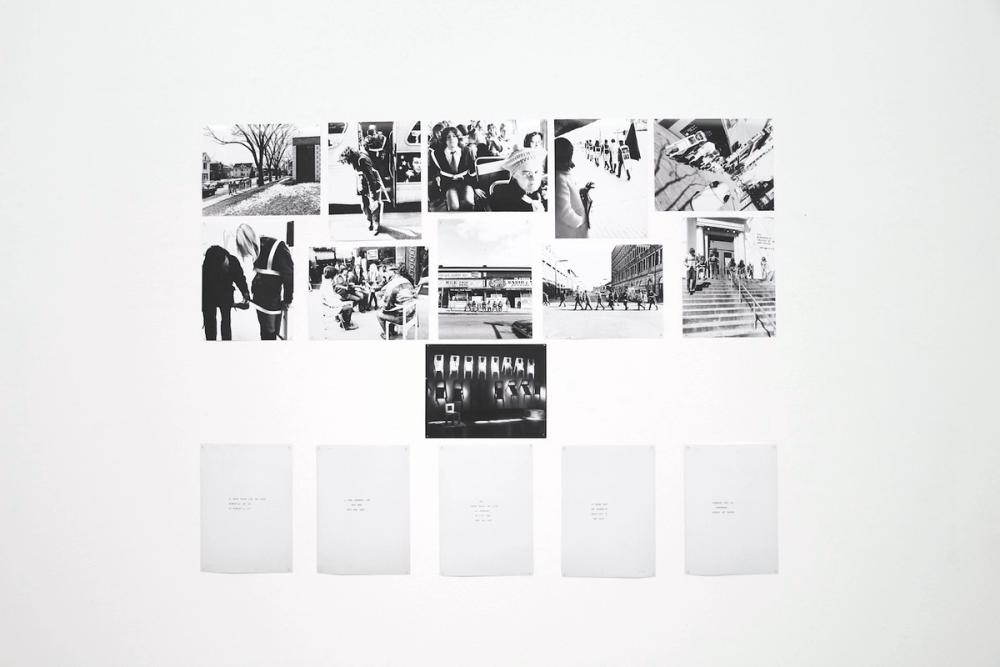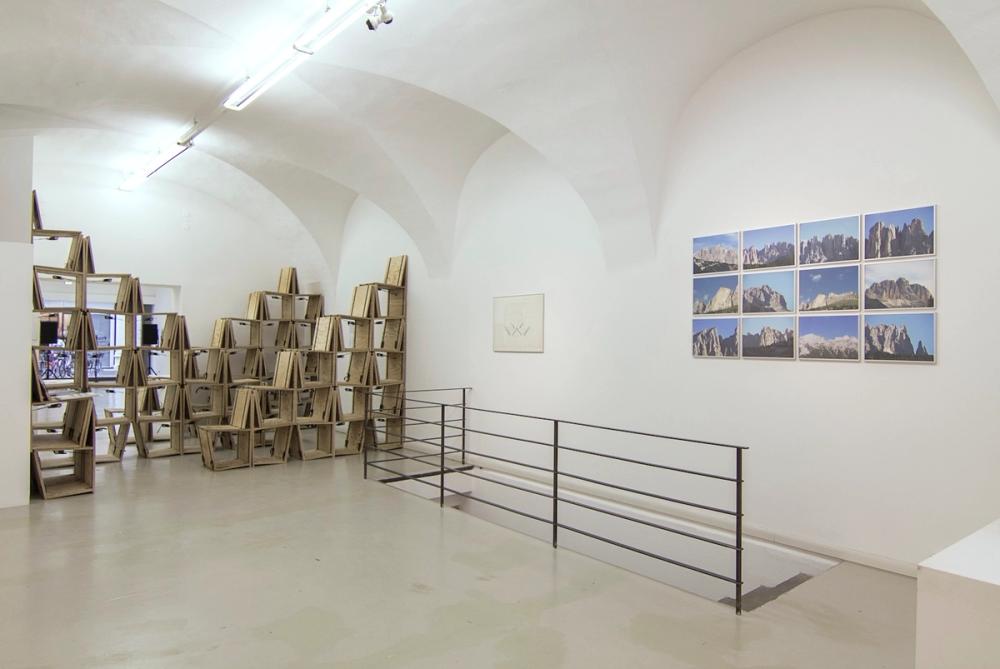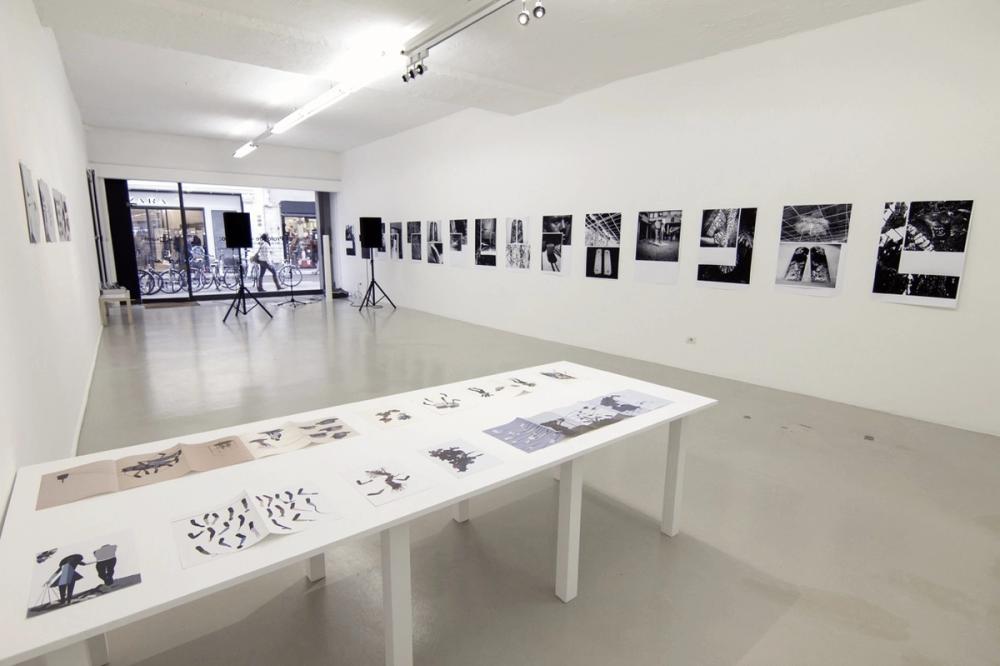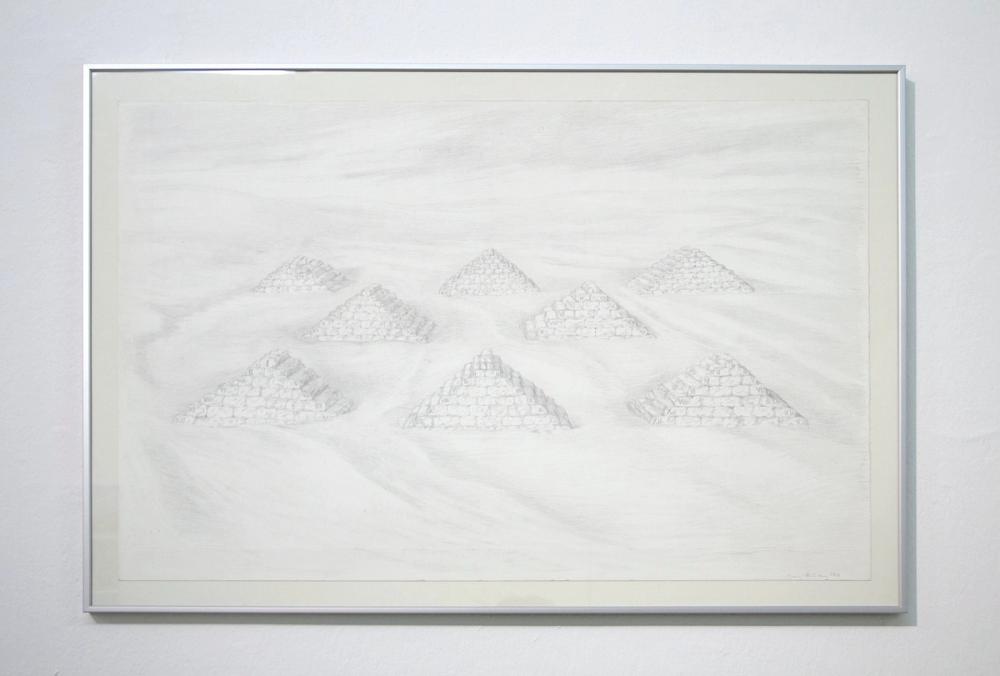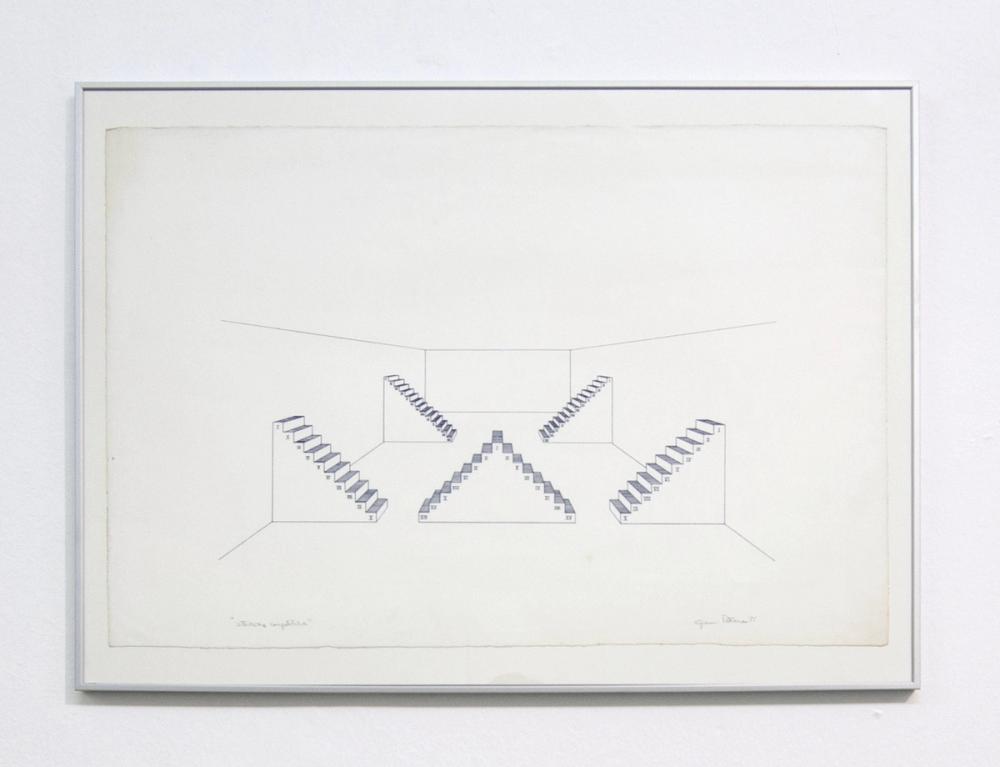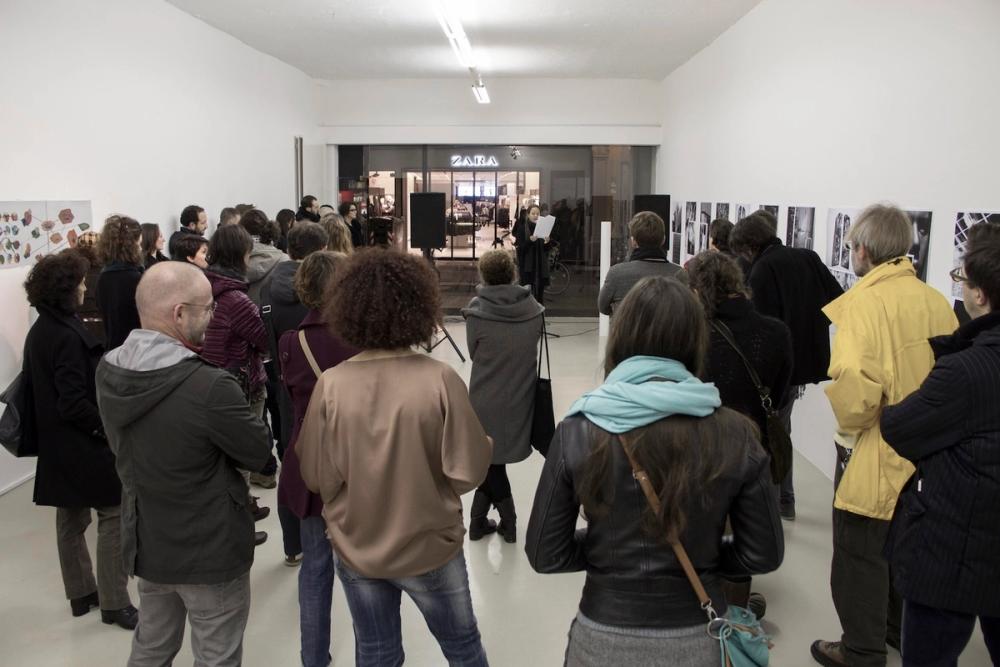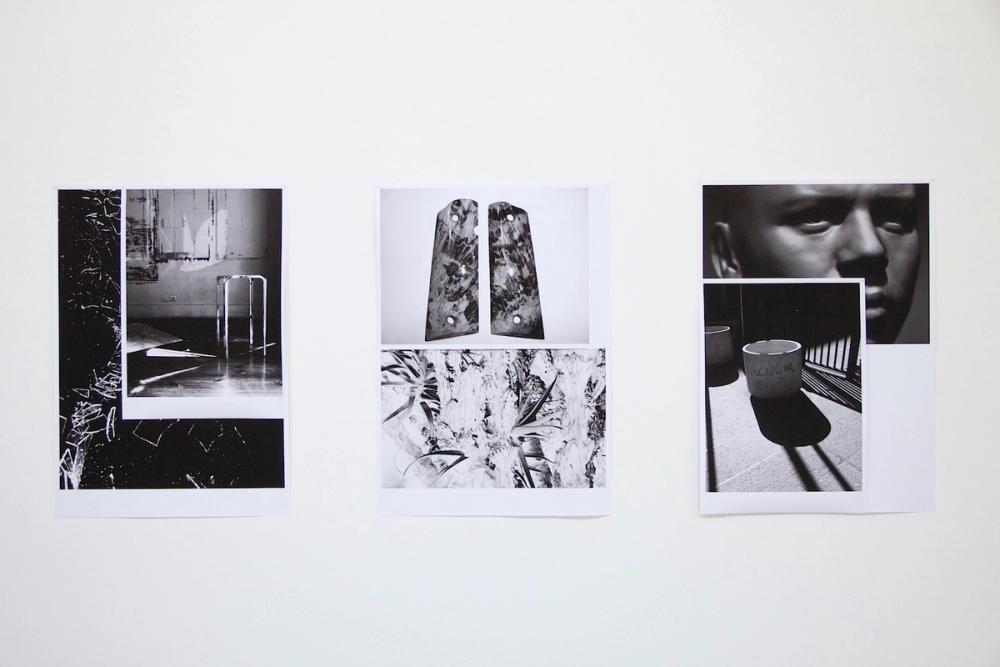PROLOGUE – PART TWO: LA MIA SCUOLA DI ARCHITETTURA
Gianni Pettena, Pedro Barateiro, Otobong Nkanga, Lorenzo Sandoval & S.T.I.F.F.
Curated by Emanuele Guidi
Following Part One: References, Paperclips and the Cha Cha Cha, the project Prologue continues with Part Two: My School of Architecture. The second chapter further explores themes and practices that are central to the future research of ar/ge kunst under the new artistic direction of Emanuele Guidi.
The title of the exhibition, La Mia Scuola di Architettura, is a direct quote from a work by Gianni Pettena; it portrays the peaks of the Dolomites in twelve photographs. Taking the role that Pettena ascribes to this panorama as its starting point, the exhibition elaborates and reflects upon the notion of landscape, the influence it may have on the formation of the individual (both as artist and citizen) and consequently on the entire community. By drawing on the tensions within the artist’s own biography, this reflection goes beyond the idea of landscape as a geo-physical, socio-political and economic entity and opens it up to an affective dimension. Pettena was born in Bolzano in 1940. He left Alto Adige behind at an early age to find and follow an experimental path that would pass through Florence and the United States and led to him becoming part of what is now considered – along with Archizoom, Superstudio and UFO – as the original core of the Radical Architecture movement in Italy. It was only after a long career dedicated to exploring the limits of architecture that Pettena recognized that the territory he had left behind so many years ago was actually ‘foundational’ for his practice.
La Mia Scuola di Architettura (2011) evokes a desire for reconciliation with that landscape, while also pointing up the conceptual debt that architecture and the built environment owe to the natural landscape. From the two projects Situazione Competitiva (1971) and The Game of Architecture (2013) it becomes quite clear that, in the artist’s view, the space of interaction between nature and architecture is an agonistic environment. Following these two projects – both of which have remained on paper until now – Pettena will rearrange the structure Mutant Matters by Lorenzo Sandoval & S.T.I.F.F. (previously presented in the first chapter of Prologue) and set it up in dialogue with another of his works, Wearable Chairs (1971).
The practices of Otobong Nkanga and Pedro Barateiro also take the ‘personal’ as a point of departure. Measured against this criteria, the landscape around them emerges as a complex environment in which economics, nature and ‘the politics of the body’ exist in a relationship of reciprocity.
Born and raised in Nigeria and educated both there and in France, Otobong Nkanga’s research proceeds from her personal experience and reflects on the dynamics of habitation, in this case through a series of drawings conceived especially for the current exhibition (Social Consequences IV, 2013). The act of drawing here is an exercise in tracing non-linear narratives; the production of a landscape (the exploitation of natural resources and the practice of building) is related to the same modality of individual development within the structure of society.
Pedro Barateiro articulates this relationship somewhat differently in his performance and installation Endurance Test (2012). The endurance test the artist refers to here is the one that Portugal (where Barateiro was born and presently lives) is constantly subjected to by the dictates of the Troika. Performance, which might also be taken to mean the output and efficiency of the international markets, is employed by the artist to reflect on his own practice. In this sense, starting from a linguistic and ontological dimension, Barateiro explores the ‘stress-test’ economic scenario that is currently affecting so many European States and reshaping the landscape in which each individual is compelled to move.
With the kind support of:
Provincia Autonoma di Bolzano, Alto Adige, Deutsche Kultur
Fondazione Cassa di Risparmio, Alto Adige
Città di Bolzano, Ufficio Cultura
Faculty of Design and Art, Free University of Bozen/Bolzano
